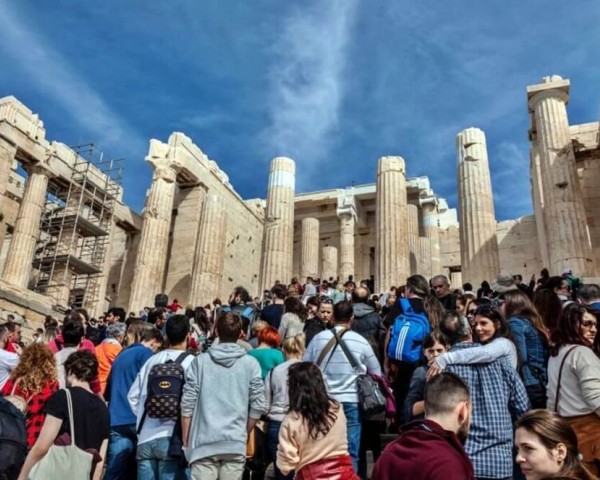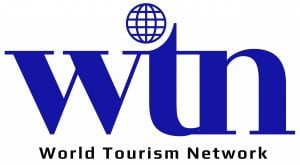The Acropolis in Athens, a UNESCO World Heritage Site, is being overrun by tourists to the point where experts call for measures to stem the flow of travelers. The image is often the same: on the cobbled path below the Sacred Rock, hundreds of people, bottles of water in hand, wait in the blazing morning sun outside the ticket office. The Acropolis is magnificent, but the number of people is overwhelming.
In fact, after two seasons affected by the Covid-19 pandemic and a good year in 2022, the number of visitors has soared thanks to an early start to the season. In May, between 14,000 and 17,000 people a day admired the Parthenon Temple at the top of the Acropolis, according to the Organization for the Management of Archaeological Resources (ODAP). A jump of up to 70% compared to May 2022.
Substantial Increase
According to Greek statistics (Elstat), visitors have increased by 85.7% compared to last year. As of April, the average number of visitors per day has already reached the same level as in August 2022, the peak tourist season in Greece.
Greece is attempting to revive its economy, which has suffered from a decade of financial turmoil, by focusing on tourism. The industry makes up almost a quarter of the country’s GDP. There are hopes that this year’s tourist numbers will exceed the 31.3 million visitors recorded in 2019. Despite concerns in France and other Mediterranean nations about the negative effects of “overtourism,” Greece’s tourist season is starting earlier and earlier.
After obtaining their ticket, visitors must still be patient due to the many people present. Another line at the bottom of the stairs leads to the sanctuary’s main entrance, which is dedicated to the goddess Athena. The Propylaea, a monument at the entrance, is frequently overcrowded. Guards may need to temporarily halt entry to alleviate the congestion, according to Ilias Patsarouhas.
Overtourism becomes a significant issue when cruise ships dock at Piraeus after sailing the Aegean and Ionian Seas. Disembarking can take over an hour, with 2,000 to 3,000 people on board.
Overtourism
UNESCO has expressed discontent with the large crowds of tourists who flock to admire ancient Greece’s outstanding architectural and artistic ensemble. At the hilltop, visitors often experience overcrowding, confusion, and long waiting times of up to 20 minutes to view the monuments.
Experts also point out that the site’s infrastructure could be more suitable for such large numbers of visitors. The president of the German NGO World Heritage Watch (WHW), Stephan Doempke, believes that creating management and tourism plans is crucial for the Acropolis. He has expressed concern about excessive tourism in recent years, which could harm the ancient site if no action is taken. Doempke emphasizes the need to address this issue to prevent further damage.
Many people are upset about building a concrete footbridge over a protected rocky site to make it easier for visitors to access. The Ministry of Culture, led by Ilias Patsarouhas, is considering setting visiting hours for groups and individual tourists to address these concerns. These rules may be implemented in time for the upcoming tourist season.




